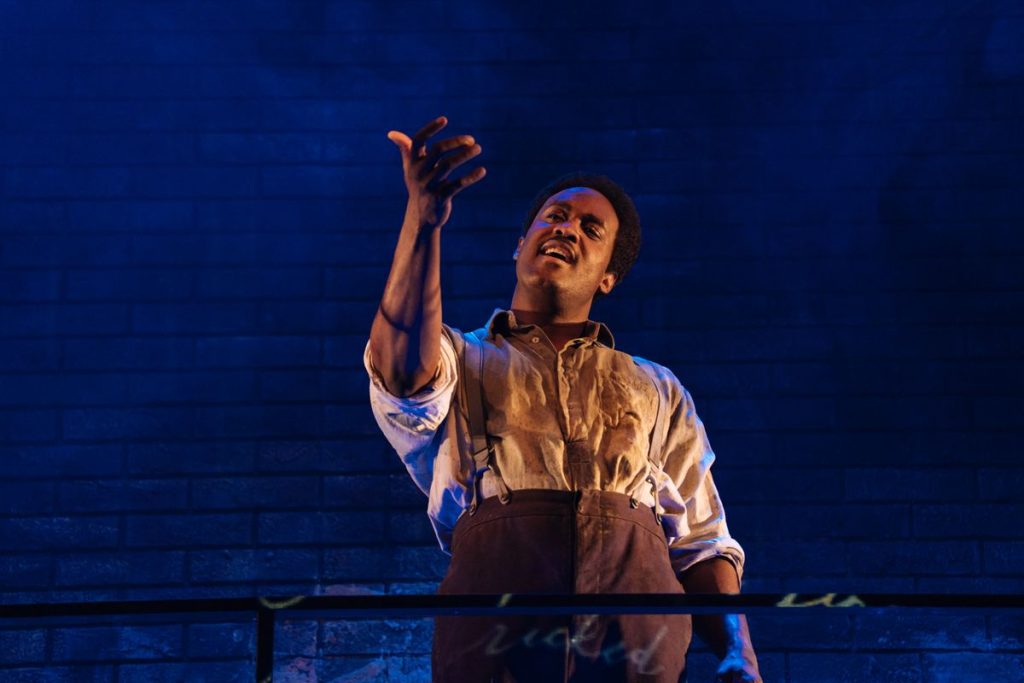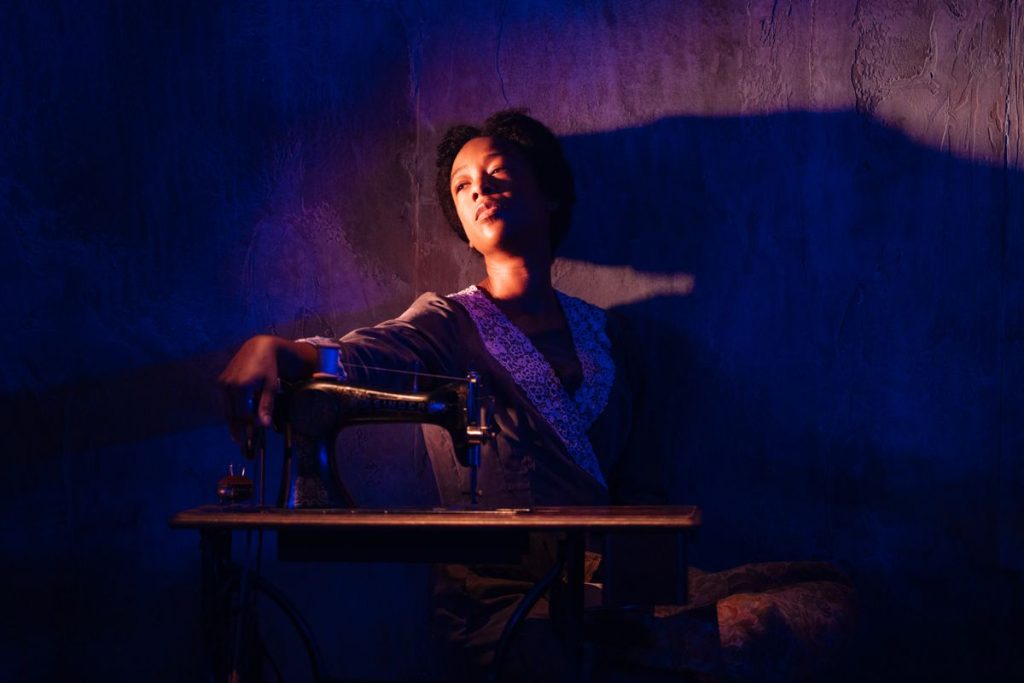Lynn Nottage’s Intimate Apparel, revived by Lynette Linton, looks like a genteel turn-of-the-century chamber piece, yet within its silk and corsetry beats a contemporary heart. Set in 1905 New York, this tale of a lonely African American seamstress feels uncannily tuned to 2025’s hunger for unheard voices. Esther Mills, played with luminous understatement by Samira Wiley, stitches lingerie for women far richer or far freer than she. It is meticulous, intimate work, and the production mirrors that care in every detail.
Nottage based the play on a sepia photograph of her own great-grandmother, imagining the life the archive forgot. The play premiered in America in 2003 but, until now, London has had only fringe glimpses. Sit back and you will hear faint echoes of Arthur Miller’s The Price or August Wilson’s Gem of the Ocean, yet the texture is entirely Nottage’s: poetic without prettiness, political without polemic.
Esther has spent 35 years minding other people’s intimacies, hand-sewing corsets for Fifth Avenue wives and Tenderloin sex workers alike. When the play opens, she slips between appointments, quilted envelope of savings in her boarding-house room, dreaming of a Harlem beauty parlour where Black women might finally feel like royalty. One afternoon a letter arrives from George Armstrong, a Barbadian labourer digging the Panama Canal. Esther cannot read, so she enlists two clients to mediate the correspondence. Society wife Mrs Van Buren supplies the flowery prose she wishes her own husband would write; charismatic prostitute Mayme performs dramatic readings in exchange for fresh frills. As winter turns to spring their letters flutter with promise and Esther’s routine falters: she hums while sewing, buys Japanese silk from orthodox Jewish cloth-merchant Mr Marks, and dares to imagine herself loved. When George finally strides onstage, Esther accepts his proposal. That bliss is short-lived. George, restless and cash-strapped, slips towards betrayal; Mayme’s ragtime piano echoes through saloon walls; Mr Marks reveals an impossible tenderness restrained by religion; and Esther must decide whether to cling to stitched-up fantasies or cut new cloth from truth. By the final scene she stands alone at her treadle, poorer in pocket yet newly rich in self-worth, a woman who has learned that a corset can hold you upright, but it can also constrict your breathing.
Wiley is astonishing. You watch her spine elongate when Esther adopts her professional persona, then curl when she retreats into shyness. She gives a masterclass in micro-gesture: a quick thumb smoothing a seam whenever nerves flare, a grin that flares like a struck match when a compliment lands. The transformation from cautious bachelor girl to bruised and blazing survivor never feels schematic; each emotional stitch is earned.

Around her, a first-rate ensemble sketches a whole city in miniature. Kadiff Kirwan’s George balances swagger with wounded insecurity; the role can tilt into villainy, yet Kirwan keeps him complicated, a man crushed by racist America even as he crushes the woman who loves him. Alex Waldmann’s Mr Marks is all gentle rumination, rolling bolts of cloth like devotional scrolls, when his hand hovers millimetres from Esther’s wrist you feel the heat of forbidden desire ripple through the auditorium. Faith Omole’s Mayme is a ragtime comet, her bluesy drawl slipping between bravado and loneliness; Claudia Jolly’s Mrs Van Buren lets hint of sapphic yearning tremble beneath porcelain poise; Nicola Hughes, as landlady Mrs Dickson, salts her tough love with warmth and wry humour.
Linton’s direction is as supple as Esther’s silk. Scenes flow on Alex Berry’s sparse set of varnished floorboards and a lofted platform that doubles as Marks’s shop and George’s canal outpost, giving the men a literal elevation early on that reality soon dismantles. Jai Morjaria’s golden-hued lighting fades to blue ash whenever hope dims, and small projections of handwritten script swirl across the back wall during epistolary passages, so language itself becomes scenic. Costume work is superb: Esther’s drab calico gradually yields to softer hues, while the lingerie she crafts gleams like secret armour.

Intimate Apparel dissects the labour women performed and the loneliness it bred: Esther sews other people’s splendour while denying herself softness; Mayme sells desire yet goes home unloved; Mrs Van Buren lives in silk cages. The play also speaks, sharply, to intersectional solidarity. Esther and Mr Marks connect across racial and religious lines through a shared love of beauty, yet social codes keep their fingertips shy of contact. In a year when Britain debates whose stories deserve centre stage, Nottage offers a corrective: here is a life small in the history books yet vast in feeling. She reminds you that the personal is political precisely because the personal so often goes undocumented.
The Donmar audience react viscerally. Gasps fly when George eyes Esther’s quilt of cash; a communal groan greets his betrayal; spontaneous applause greets Esther’s refusal to be diminished. You feel the room lean forward in near prayer during a hushed midnight sewing sequence.
Intimate Apparel is not a bombastic blockbuster. It moves slowly. Yet it proves that the smallest of stories, told with honesty and craft, can stretch across centuries and whisper directly into your ear.


